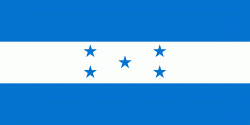Lamaní
Lamaní is a municipality in the Honduran department of Comayagua. It is located about 25 minutes from the City of Comayagua, in the vicinity of the Piedra Parada Mountain.
Many of Lamaní's residents own farms where they raise cows and other livestock. Farmers also cultivate rice, beans, corn, coffee, tomato, cucumbers, and eggplants, among other crops.
Some residents immigrate to the United States to work and provide income to their families. Being a small town, Lamaní immigrants know each other and tend to stay in touch, sometimes forming neighborhoods with a lot of Lamaní immigrants in the United States.
It has recently undergone changes to its physical and communications infrastructure, such as paving of roads, access to the internet, cable television service, etc. They have their own medical clinic and preparatory schools. Some studious residents have turned out to be lawyers, doctors, engineers, and even soccer players, most notably Fernando "Azulejo" Bulnes, who played for Atlético Español of Tegucigalpa in 1965-1966.
Many of Lamaní's residents own farms where they raise cows and other livestock. Farmers also cultivate rice, beans, corn, coffee, tomato, cucumbers, and eggplants, among other crops.
Some residents immigrate to the United States to work and provide income to their families. Being a small town, Lamaní immigrants know each other and tend to stay in touch, sometimes forming neighborhoods with a lot of Lamaní immigrants in the United States.
It has recently undergone changes to its physical and communications infrastructure, such as paving of roads, access to the internet, cable television service, etc. They have their own medical clinic and preparatory schools. Some studious residents have turned out to be lawyers, doctors, engineers, and even soccer players, most notably Fernando "Azulejo" Bulnes, who played for Atlético Español of Tegucigalpa in 1965-1966.
Map - Lamaní
Map
Country - Honduras
 |
 |
| Flag of Honduras | |
Honduras was home to several important Mesoamerican cultures, most notably the Maya, before the Spanish colonization in the sixteenth century. The Spanish introduced Catholicism and the now predominant Spanish language, along with numerous customs that have blended with the indigenous culture. Honduras became independent in 1821 and has since been a republic, although it has consistently endured much social strife and political instability, and remains one of the poorest countries in the Western Hemisphere. In 1960, the northern part of what was the Mosquito Coast was transferred from Nicaragua to Honduras by the International Court of Justice.
Currency / Language
| ISO | Currency | Symbol | Significant figures |
|---|---|---|---|
| HNL | Honduran lempira | L | 2 |
| ISO | Language |
|---|---|
| ES | Spanish language |















